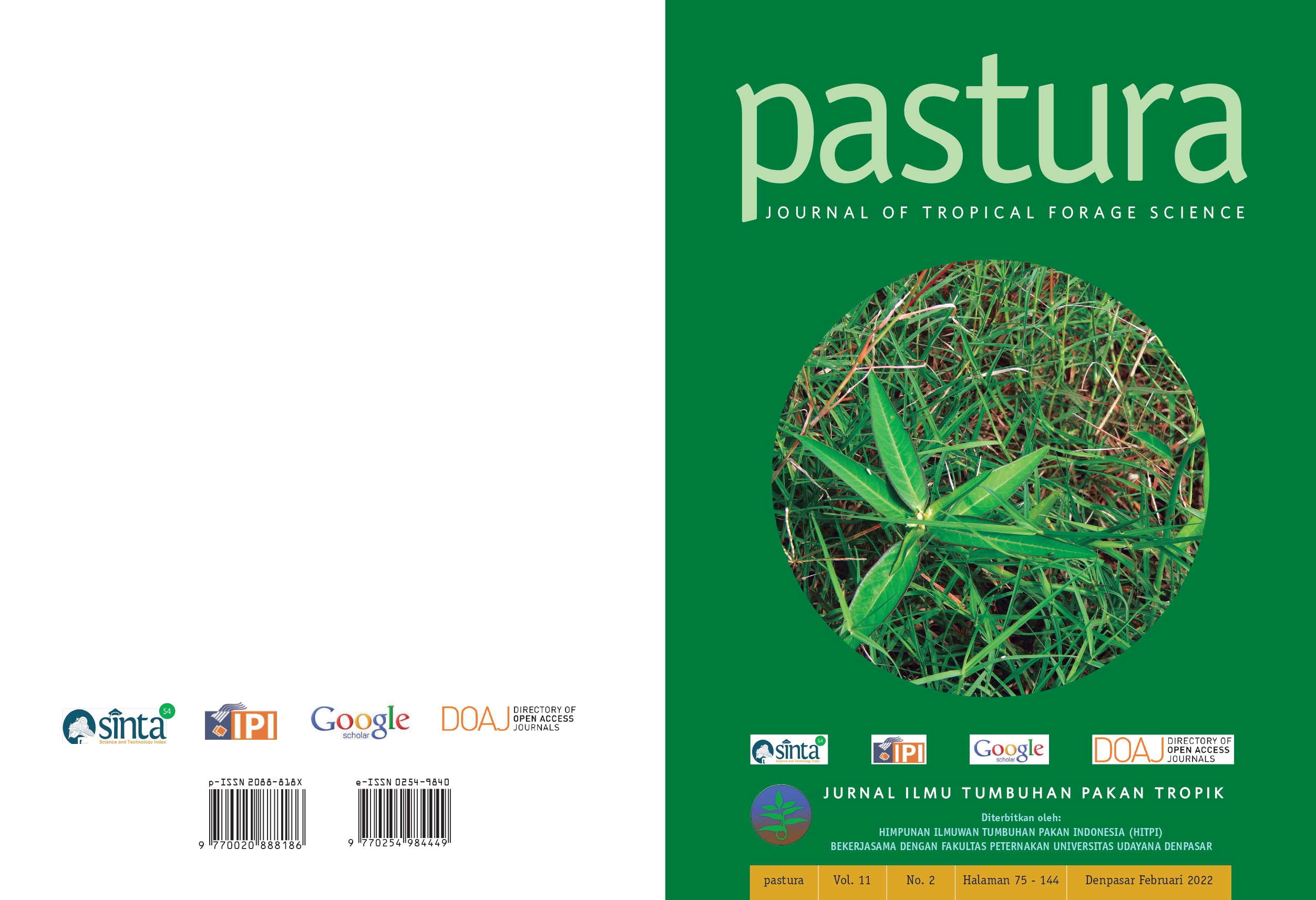THE EFFECT OF DECOMPOSITION TIME AND DOSAGES OF CATTLE MANURE FERTILIZERS ON THE GROWTH AND YIELD OF Asystasia gangetica (L.) subsp. MICRANTHA
Abstrak
This study aims to determine the effect of decomposition time, the best fertilizer dose and the interaction between the decomposition time and the dose
of cow manure on the growth and yield of Asystasia gangetica (L.) subsp. Micrantha. The research was conducted at the Greenhouse, Sesetan Research Station, Faculty of Animal Husbandry, Udayana University on Jalan Raya Sesetan Gang Markisa Denpasar. The study was done for about 3 months, using a completely randomized design (CRD) with a factorial pattern. The first factor is the decomposition time of 4 weeks (W4), 2 weeks (W2), without decomposition (W0) and the second factor is cow manure fertilizer at a dose of 0 t ha-1 (D0), 10 t ha-1 (D10), 20 t ha (D20), 30 tons ha -1 (D30). Each treatment was repeated four times, so that there were 48 experimental units. The variables observed were growth variables, yield variables and plant growth characteristics variables. The results showed that there was an interaction between the time of decomposition and the dose on the ratio of leaf dry weight to stem dry weight but did not show any interaction on other variables. Decomposition time of 4 and 2 weeks actually gave a better response compared no decomposition treatment. Increasing the dose of fertilizer can increase the growth and yield of Asystasia gangetica (L.) subsp. Micrantha. It can be concluded that there is an interaction between the decomposition time and the dose of fertilizer on the variable ratio of leaf dry weight to stem dry weight, and the decomposition treatment of 4 weeks (W4) and a dose of 30 t ha-1 gave the best response to the growth and yield of Asystasia gangetica (L.) subsp. Micrantha.
Keywords: Asystasia gangetica, cow manure, decomposition, growth, yield
##plugins.generic.usageStats.downloads##
Authors who publish with this journal agree to the following terms:
- All articles published by Pastura Journal Of Tropical Forage Science are made available under an open access license worldwide immediately. This means everyone has free and unlimited access to the full-text of all articles published in Pastura Journal Of Tropical Forage Science, and everyone is free to re-use the published material given proper accreditation/citation of the original publication. Open access publication is supported by authors' institutes or research funding agency by payment of a comparatively article processing charge for accepted articles (See Author Fees). Pastura Journal Of Tropical Forage Science publish articles under the Creative Commons Attribution License.
- Authors are able to enter into separate, additional contractual arrangements for the non-exclusive distribution of the journal's published version of the work (e.g., post it to an institutional repository or publish it in a book), with an acknowledgement of its initial publication in this journal.
- Authors are permitted and encouraged to post their work online (e.g., in institutional repositories or on their website) prior to and during the submission process, as it can lead to productive exchanges, as well as earlier and greater citation of published work (SeeThe Effect of Open Access).





